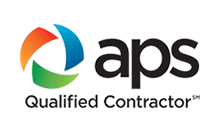Continuing our discussion on Indoor Air Quality (IAQ), we have already discussed the benefits of installing an air purification system.
Next on the list is improving filtration.
There are so many different types of air filters on the market, how can one make an educated decision on what’s best for their health, their pocketbooks, and their HVAC system? Fortunately, Arizona’s Dukes of Air is here to help.
Filtration is graded, or scored, by a MERV rating.
What is MERV?
MERV stands for Minimum Efficiency Reporting Value. It is associated with a number. The higher the number, the higher the effectiveness of the filtration media at removing particles within the range of 0.3 to 10 micrometers. To give you an idea of how small 0.3 micrometer is, mold spores and pet dander are typically around 10 micrometers and bacteria is between 0.3 – 1.0 micrometer.
So, science aside, how do you choose the best filter to suit your needs.
There were 3 things listed at the beginning of this piece that must be considered:
- Your Health
- Your Pocketbook
- Your HVAC System
First, we will focus on your health.
Obviously, improving the filtration in your home will improve your health. Filtering out the smaller particles means bacteria, dust, pollen, and even viruses won’t be spread throughout your home by your HVAC system. The highest MERV rated filters will remove the smallest particles.
Next, let’s look at the impact on your pocketbook.
Changing out a filter every 30 days can get costly. Common pleated 1” residential filters are typically MERV 8, and cost around $5.00 – $11.00 retail (depending on size). 3M Filtrete 1” pleated filters are typically MERV 12, and cost around $9.00 – $16.00 retail (depending on size). The cheaper 1” spun fiberglass filters typically have a MERV rating of 4 or less, but also only cost around $1.00 – $4.00 retail (depending on size). Replacing filters monthly can cost upwards of $192.00 annually, if you decide to go with the 3M Filtrete. We prefer to sell a 4” media filter that fits most common filter return air grills. These 4” media filters have a MERV 13 rating, and can last 6 to 12 months, depending on the environment in which they are installed. Typical cost for this type of filter is around $85.00. In our opinion, the best residential filtration media on the market is the Healthy Climate 16, a MERV 16 media air cleaner that is installed inline with the HVAC system. These come at a higher cost but are the most effective and can last as long as 12 months before needing to be changed.
And last, but absolutely not least, is your HVAC system.
The one thing that hasn’t been discussed is the strain that filtration puts on the HVAC system. With some filters, the higher the MERV rating, the more restrictive the filtration media is, and the higher the strain is placed on the HVAC system to pull air through that media. For example, the 3M Filtrete which is 54% effective at trapping particles between 0.3 – 1.0 micrometers, can add as much as 0.47 resistance, as measured in inches of water column. By comparison, the cheap spun fiberglass filters offer much less resistance to airflow (.16 IWC), but also are only around 75% effective at trapping particles 1 – 10 micrometers. The best commonly found filtration system, The Healthy Climate 16, is 95% effective at trapping particles between 0.3 – 10 micrometers, and has a resistance of only .31 IWC.
What does this all mean to you?
Well, you want to find the most economical, most efficient, least resistant filtration system. Several different types have been listed. Keep in mind, there are many other options available that weren’t mentioned in this article (electronic air cleaner, to name one). Arizona’s Dukes of Air is always available to help with the decision process and discuss all options. If you need help deciding, please give us a call @ 480-773-6565.











